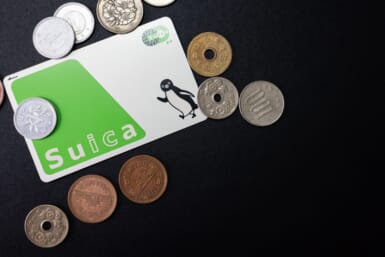The other day I bumped into an old acquaintance in the Ginza.
He looked a shade harassed. How were things going, I asked him, putting on a show of cheerfulness, hoping that he was seeing some ray of light in the present darkness?
“Aw terrible,” he responded. “Just atrocious. People have money, but they are not using any of it. There’s absolutely no movement to buy art. It’s hopeless.”
This friend is one of Japan’s best-known contemporary art dealers. The last decade has not been kind to him; 2001,I gathered, is turning out to be beastly.
“Zenzen dame” he said.
He’s not the only one to talk like this. I stumbled across a piece in the papers just two days ago, citing Prof. Haruo Shimada of Keio University, a well-known figure in academia. At the end of each year Shimada-san sends out greetings to all his friends. I see the cheerful faces of his wife and children as Christmas approaches. He is not, if you will, an ultimate hangdog.
Nonetheless, these times trouble him. In the interview he gave the other day he foreshadowed “the end of Japan.” Puff! The world’s second largest economy snuffed out just like that!
I could go on. You may have seen an op-ed piece in The Japan Times by Sam Jameson the other day. Writing his first column for that paper, Sam stated that, as long as the Japanese authorities fail to address the debt problem—inherently the biggest issue in economic management at this time—just so long the economy would limp along. That piece was printed on Monday, Apr. 2.
Two days later, the International Herald Tribune, now combining the Asahi Shimbun, ran this headline on a piece by Stephanie Strom of The New York Times: “Burdened by Debt, Japan Inc. Faces Future of Pain.”
In her article she quoted Richard Katz, a senior editor of the Oriental Economist newsletter, based in New York, as saying: “If you’re talking about really writing off bad debt, then you’re talking about foreclosing on the bad debtors, about bankrupting a lot of companies,” he told The NYT. He estimates that “an honest-to-goodness clean-up of the Japanese corporate sector… would entail the loss of two to three million jobs.”
This is not going to be palatable, he judged, in the present political environment.
Ah, Japanese politics! As I write, the TV in my home is talking about bringing back into office the veteran Ryutaro Hashimoto, a man I remember chiefly for an atrocious bottle-green suit he used to wear. Imagine! The conservative leadership in this country is turning to someone who was hounded out of office three years ago, because he made a mess of economic policy.
Meanwhile, let’s not overlook the international dimension of Japan’s ills. By early April, as you may recall, Alan Greenspan, chairman of the Fed, was warning, in testimony to the U.S. Congress, that Japan’s economy may drag the entire world down—while (though he did not himself use the R-word) the U.S. itself is stuttering into a “recession,” to use an expression that has appeared with increasing frequency this year in the columns of The NYT and The Washington Post.
America and Japan, as we all keep in mind, account for 40% of the world economy between them—hence Mr. Greenspan’s concern. With the two giants languishing, the entire world can lose momentum and spin into darkness, he all but concluded.
So? Eternal optimist that I am, what do I have in mind? Firstly, America is not totally adrift. The Administration is getting the giant tax cut George W. Bush has been pushing for. Bush will get the lion’s share of what he seeks to judge by a page one analysis piece in The NYT, written by Dick Stevenson. Check out the Website (www.nytimes.com) if you are interested, for Sunday, Apr. 8.
A friend on the editorial board there, Steve Weisman, warns me that the Bush budget, with its gigantic tax cuts, was crafted two years ago under radically different economic conditions. The aim then was to avoid over-stimulating the economy. So this budget is far from perfect. Still a major effort is afoot in Washington, just now, to stave off a crash.
As to Japan: if the next prime minister is wise, whoever he is, he will encourage the Bank of Japan from afar (he has to respect its formal independence under a reformed charter) in its belated efforts to push for growth.
The Bank of Japan is run these days by a nine-man policy board. One of these nine people is a businessman of the entrepreneurial variety—Nobuyuki Nakahara. He tells me that he believes that the bank has reached “a major turning point in its 120-year history,” and has opted to put all the emphasis in policy-making on “the money supply rather than interest rates,” to jack up growth.
He is admittedly just one of nine board members. And for the last two years the other members of the policy board have tended “to outvote me eight to one,” he says with a chuckle. Nonetheless, friends in the Japanese press tell me that Nakahara-san is getting his way, and has swung the cautious board in favor of growth policies. That is what Tom Taniguchi of Nikkei Business told me.
Yes, I see grounds for hope. These days the BOJ is a miracle of transparency, compared with the old days. It posts records of the meetings of the policy board on a Website in English (www.boj.or.jp); these records have become much fuller in recent years. The bank is interested in spreading its bounty—its information—far and wide. In that spirit Nakahara-san has been moving to re-establish contact with his acquaintances in the foreign press to spread the word on the latest developments at the bank. He has been in touch, I believe, with people in key positions in UK journalism—Will Dawkins, the foreign editor of The Financial Times, and Pamela Woodall, the economics editor of The Economist.
My sense—admittedly from afar, I did not go there to carry out interviews—is that there is a gathering sense at the BOJ that Japan has that central problem: the accumulation of debt. “There is not a single sector (of the economy) that could repay (its debts) within 20 years, let alone 10!” remarked David Atkinson, a banking analyst at Goldman Sachs, quoted by The NYT. So it’s time—if not before time—for the central bank to wake up and push for growth, using monetary tools.









